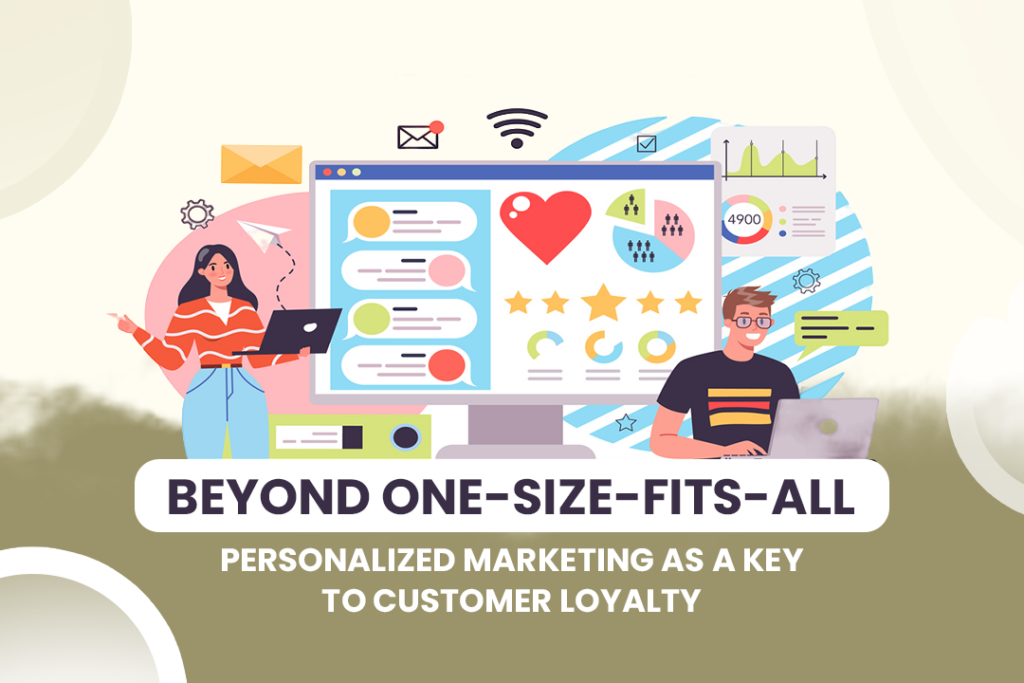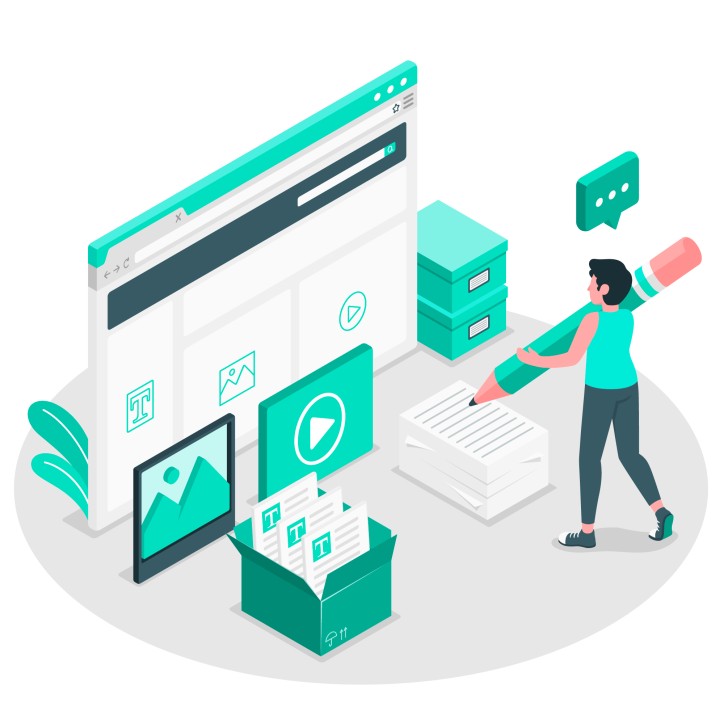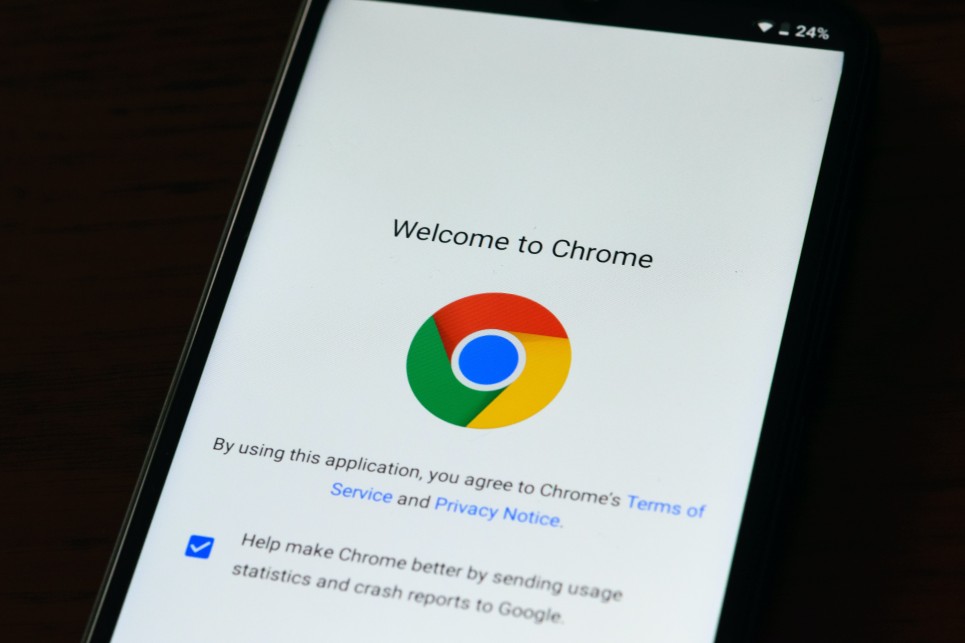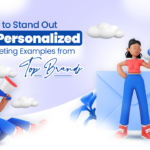
Personalized marketing uses data analysis and digital technology and customizes messages and product offerings to meet individual customer preferences, leading to stronger connections and increased loyalty.
In this article, we will explore how the shift from generic, one-size-fits-all marketing to personalized marketing is not just a trend but a necessity in today’s modern business landscape. We will also look at how businesses can harness the potential of personalized marketing to build longer-lasting relationships with their customers and, in turn, drive sustainable growth.
What is Personalized Marketing?
Personalized marketing, also known as one-to-one marketing or individual marketing, is a marketing strategy that aims to deliver individualized content to recipients through data collection, analysis, and automation technology.

Personalized marketing involves understanding the needs and specific interests of individual prospects. It tailors marketing messages and product or service offerings based on that understanding. This can range from-
- Something as simple as addressing the customer by their name in emails
- To more complex, predictive, personalized campaigns like recommending products based on a customer’s history, behavior, or interaction with the brand.
It’s about delivering the right message to the right person at the right time, making the customer feel understood and valued. This strategy leverages technology and data-driven marketing to create more targeted and relevant brand messages.
Types of Personalized Marketing
Personalized marketing strategies can be tailored for both Business-to-Business (B2B) and Business-to-Consumer (B2C) contexts. Here are some types of personalized marketing strategies for both B2B and B2C:
B2B Personalized Marketing:
- Account-Based Marketing (ABM): This strategy focuses on targeting specific high-value accounts rather than a broader audience. It involves creating personalized content and messages that resonate with each target account’s specific needs and challenges.
- Customized Proposals: Tailoring proposals to each business client’s unique requirements and pain points. This might involve creating detailed solutions and cost breakdowns based on the client’s specific needs.
- Personalized Email Campaigns: These campaigns send personalized emails to decision-makers within target businesses, addressing their specific pain points and offering solutions.
- Dynamic Content: Adapting website content and landing pages based on a visitor’s industry, role, or interests ensures that the content they see is relevant to their needs.
- Personalized Recommendations: Providing recommendations for products or services that align with the business’s purchasing history or industry needs.
- LinkedIn Outreach: Tailoring connection requests and messages on LinkedIn to engage with key decision-makers in a more personalized manner.
B2C Personalized Marketing:
- Behavioral Retargeting: Displaying targeted ads to consumers based on their previous interactions with your website or online content.
- Personalized Product Recommendations: Suggesting products based on a consumer’s purchase history, browsing behavior, or demographic information.
- Location-Based Marketing: Sending location-specific offers, promotions, or notifications to customers’ mobile devices when they are in close proximity to a physical store.
- Segmented Email Campaigns involve dividing your email list into segments based on customer preferences, behaviors, or demographics and sending tailored email content to each segment.
- Loyalty Programs: Offering rewards, discounts, or exclusive content to customers based on their purchase history and engagement with your brand.
- Social Media Personalization involves creating content for social media platforms that resonates with specific audience segments, considering their interests, behaviors, and preferences.
- Personalized Content Curation: Recommending blog posts, articles, or videos to website visitors based on their past content consumption.
- Interactive Content involves using quizzes, surveys, or interactive tools to engage consumers and provide personalized recommendations or results.
Both B2B and B2C personalized marketing strategies aim to create a more relevant and engaging experience for the target audience, leading to increased customer satisfaction and potentially higher conversion rates. However, the specific tactics and approaches may vary based on the nature of the target audience and the business relationship.
Importance of Personalized Marketing
The importance of personalized marketing in the modern business landscape cannot be overstated. Here are a few reasons why:
- Customer Engagement: Personalized marketing increases customer engagement. Customers who receive personalized content are more likely to interact with it. This could be opening an email, clicking on a link, making a purchase, or sharing content on social media.
- Improved Customer Experience: Customers appreciate when businesses understand their needs and preferences. It allows companies to provide a unique customer experience tailored to each individual, which leads to happier customers.
- Increased Sales and Revenue: Personalized marketing can increase conversion rates. By delivering relevant content to consumers, they’re more likely to make a purchase. Personalized product recommendations, for example, can significantly increase average order values and overall sales.
- Enhanced Customer Loyalty: Consistently delivering personalized experiences can help businesses build stronger customer relationships. This increases customer retention and encourages repeat purchases, ultimately enhancing customer loyalty.
- Competitive Advantage: Personalized marketing can help businesses stand out in a crowded marketplace. It allows companies to differentiate themselves by creating a unique brand identity.
- Better Marketing Metrics: Personalized marketing can lead to better marketing metrics. This includes higher open and click-through rates for email campaigns, higher engagement rates on social media, and higher website conversion rates.
Personalized marketing allows businesses to connect personally with their customers and deliver tailored advertising messages, leading to improved brand awareness.
Benefits of Personalized Marketing
Personalized marketing offers numerous benefits to businesses aiming to connect more deeply with their customers. Here are some of the key advantages:
- Increased Customer Engagement: Personalized marketing helps capture an average consumer’s attention more effectively than traditional advertising. This heightened awareness often increases engagement with the brand’s content, products, and services.
- Higher Conversion Rates: Personalized marketing targets specific needs and preferences and increases the likelihood of consumers taking the desired action. This can include making a purchase, signing up for a service, or subscribing to a newsletter.
- Improved Customer Loyalty and Retention: Personalized interactions show customers that a brand values and understands them. This can strengthen the relationship and improve retention rates.
- Greater Customer Satisfaction: Customers’ satisfaction with the brand tends to increase when they feel understood and catered to. Personalized marketing always leads to meaningful relationships.

- Enhanced ROI on Marketing Spend: Personalized marketing enables targeting the right person with the right message at the right time, thereby causing resources to be used more efficiently, leading to higher returns.
- Insightful Data Collection: The data collected during personalized marketing efforts can provide valuable insights into consumer behavior and preferences, enabling new ideas for effective marketing.
- Competitive Differentiation: In a saturated market, personalized marketing can help a brand stand out by delivering each customer a unique, tailored experience.
In a nutshell, personalized marketing benefits both businesses and customers. It makes marketing efforts more effective and efficient while enhancing customer experience and brand perception.
Challenges of Personalized Marketing
While personalized marketing offers many benefits, it also comes with several challenges that businesses must navigate:
- Data Collection and Privacy: Collecting consumer data for personalized marketing can be daunting. Moreover, with regulations like GDPR (General Data Protection Regulation) and CCPA (California Consumer Privacy Act), businesses must be careful to collect and handle data in a way that respects privacy laws and user consent.
- Data Analysis and Use: A wealth of data is useless if a business cannot analyze it and derive actionable insights. This often requires advanced tools and expertise in data analysis.
- Maintaining Relevance: Personalized marketing requires ongoing effort. The content must remain relevant and updated to the customer’s expectations and shared characteristics with the brand.
- Balancing Personalization and Intrusiveness: There’s a fine line between personalization and intrusion. Businesses need to ensure their personalization efforts do not appear intrusive or creepy, which could lead to a negative customer experience.
- Scalability: As a business grows, so does the complexity of delivering personalized experiences to an ever-larger customer base. Scaling personalized marketing efforts while maintaining quality can be a significant challenge.
- Integration across Channels: Customers interact with brands across multiple channels (website, email, social media, in-store, etc.). Providing a consistent, personalized experience across all these touchpoints can be complex.
7. Technological Infrastructure: Personalized marketing often requires a robust technological infrastructure to manage and process large amounts of data in real-time.
Despite these challenges, the rewards of personalized marketing often outweigh the effort and resources required to implement it effectively. Overcoming these hurdles can lead to deeper customer relationships and increased sales and revenue.
Tips for Creating a Successful Personalized Marketing Strategy
Creating a successful personalized marketing strategy involves a delicate balance of understanding the extensive information of customers and utilizing the right tools and technologies. Here are some tips to help you create a successful personalized marketing strategy:
1. Understand Your Customers
This is the bedrock of a successful personalized marketing strategy.
#How-To?
- Collect Data: To understand your customers better, gather as much data as possible about them. You can collect this data from various sources like your website, Customer Relationship Management software, social media platforms, and customer surveys.
- Create Customer Personas: Use the collected data to create detailed customer personas. These fictional representations of your different customer segments can help you understand your customer needs, behaviors, and pain points.
- Map the Customer Journey: Understand your customers’ buying journey. This will help you identify critical touchpoints and opportunities for personalization.
- Seek Feedback: Regularly solicit feedback from your customers to understand their experiences, preferences, and areas of dissatisfaction. Gather surveys to improve your services.

2. Segment Your Audience
Audience segmentation is the process of dividing your customers into distinct groups based on specific characteristics, such as demographics, behavior, interests, and needs.
#How-To?
- Identify Segmentation Criteria: To segment your audience, determine the criteria you will use to segment your audience. This can be based on various factors like age, gender, location (demographics), purchasing habits, browsing (behavioral), interests, attitudes (psychographics), or stage in the customer journey.
- Understand Each Segment: Deeply understand each segment’s unique needs, preferences, and pain points. This understanding will inform the personalized marketing strategies you develop for each part.
- Tailor Your Marketing Efforts: Tailor your marketing messages, offers, and experiences to each segment. This ensures that your marketing is relevant and resonates with each group, increasing its effectiveness.
- Monitor and Adjust: Regularly review and update your personalized subject line based on new data or changes in the behavioral data. This ensures your components remain relevant and your marketing remains effective.
3. Create Personalized Content
Creating personalized content is a crucial component of a successful personalized marketing strategy.
#How-To?
- Tailor Your Message: Create messages that speak directly to each customer or segment. This could involve addressing their needs, using language that resonates with them, or referring to omnichannel personalization.
- Personalize Across Channels: Ensure your personalized content is delivered across all customer touchpoints. This includes your website, emails, social media, and even in-store experiences.
- Use Dynamic Content: Use tools that allow for dynamic content, which changes based on the viewer’s characteristics or behavior. This could involve displaying different product recommendations, offers, or content pieces to other customers.
- Leverage User-Generated Content: User-generated content, like reviews or social media posts, can be a powerful form of personalized content. Highlighting a customer’s positive experience can make other customers with similar characteristics feel more connected to your brand.

4. Test and Optimize
Testing and optimizing are critical parts of a successful personalized marketing strategy.
#How-To?
- Conduct A/B Testing: A/B testing involves creating two versions of a marketing element (like an email, webpage, or ad) and seeing which performs better. This can provide valuable insights into what types of content, design, offers, or messaging your audience responds best to.
- Use Analytics: Use analytics tools to track the performance of your personalized marketing efforts. Look at metrics like click-through rates, conversion rates, bounce rates, website visits, and time spent on the page to understand what’s working and what’s not.
- Monitor Customer Behavior: Keep an eye on how customers interact with your personalized content. This can provide clues about what types of personalization are effective.
- Gather Feedback: Regularly ask for feedback from your customers. This can provide direct insights into what they like and don’t like about your personalized marketing.
- Iterate and Improve: Use the insights to improve your personalized marketing efforts. This could involve tweaking your messaging, trying different types of personalization, or improving the timing of your actions.
5. Respect Privacy
Always ensure your customers about your ways of respecting their privacy. This is a crucial element of personalized marketing.
#How-To?
- Be Transparent: Communicate to your customers what data you’re collecting, why you’re collecting it, and how you’re using it. This can be done through a clear and easily accessible privacy policy.
- Obtain Consent: Always obtain explicit consent from your customers before collecting or using their data. This can be done through sign-in forms, direct mail, or consent checkboxes.
- Provide Control: Give your customers control over their data. This includes the ability to view, update, or delete their data. They should also be able to opt out of data collection or personalized marketing if they choose.
- Secure Data: Ensure you have robust security measures to protect your consumers’ data from breaches. This could involve using encryption, secure servers, and strong access controls.
- Comply with Regulations: Be aware of and comply with all relevant data protection and privacy regulations, such as the General Data Protection Regulation (GDPR) in the European Union or the California Consumer Privacy Act (CCPA) in the United States.

6. Use Real-Time Data
Incorporating real-time data can help you create more relevant and impactful experiences for your customers.
#How-To?
- React to Customer Behavior: Use real-time data to understand how customers interact with your brand and respond accordingly. For example, if a customer abandons their shopping cart, you can send an email reminder or offer a discount to encourage them to complete their purchase.
- Adjust Content Based on Context: Use real-time data to personalize content based on factors like a customer’s location, the weather, or local events. This can make your marketing more relevant and engaging.
- Monitor and Respond to Trends: Real-time data can help you identify trends, such as popular products or emerging customer preferences. You can use this information to capitalize on trends.
- Trigger Personalized Experiences: Use real-time data to trigger personalized experiences based on specific customer actions or behaviors. For example, if a customer visits a specific product page, you could show them a customized offer or recommend related products.
- Update Customer Segments: Leverage real-time data to keep your customer segments up to date. As customers’ behaviors and preferences change, you can adjust your basic segmentation strategy to remain practical.
- Improve Personalization Algorithms: Real-time data can help you refine and improve your personalization algorithms. By continuously feeding data into your recommendation engine, you can ensure they provide the best possible personalized experiences.
Tools Used for Personalized Marketing
Creating a personalized marketing strategy requires using various tools-
- To collect and analyze data
- Develop and deliver customized content, and
- Measure the effectiveness of your efforts.
Here are some of the critical tools used for personalized marketing:
1. Customer Relationship Management (CRM) Systems: CRM tools like Salesforce, HubSpot, or Zoho CRM are crucial for managing customer data, tracking interactions, and understanding customer behavior. They can provide a 360-degree view of your customers, which is vital for effective personalization.
2. Data Management Platforms (DMPs): DMPs like Adobe Audience Manager or Oracle BlueKai help businesses collect, organize, and analyze large amounts of data from various sources. They can create detailed customer profiles and segments that can be used for targeted marketing campaigns.
3. Marketing Automation Platforms: Tools like Marketo, Pardot, or Mailchimp automate the process of sending personalized emails, text messages, or social media posts based on specific triggers or customer behaviors.
4. Personalization Engines: Tools like Optimizely or Dynamic Yield allow businesses to create personalized web experiences, offering different content, recommendations, or offers based on the user’s behavior, location, or other factors.
5. Analytics Tools: Tools like Google Analytics or Mixpanel help businesses track and measure the effectiveness of their personalized marketing efforts. They provide insights into user behavior, conversion rates, and other vital metrics.

6. Artificial Intelligence (AI) Tools: AI and machine learning tools can analyze large amounts of data and predict customer behavior. They can also automate personalization and improve its effectiveness.
7. Social Media Management Tools: Tools like Hootsuite, Sprout Social, or Buffer help businesses manage their social media presence and deliver personalized content to their followers.
8. Content Management Systems (CMS): CMS tools like WordPress or Drupal can be used to create personalized content for websites or blogs.
Each tool serves a unique purpose in the personalized marketing process, and many can be integrated for a more seamless and practical approach. A business’s use of tools will depend on its specific needs, resources, and goals.
Frequently Asked Questions
1. What Data is Used for Personalization?
Data used for personalization includes demographic information (age, gender, location), behavioral data (website interactions, purchase history), psychographic data (interests, preferences), and contextual data (current location, device used). This information helps tailor content, product recommendations, and marketing messages. Additionally, data from social media, surveys, and customer feedback further refine personalization. Ethical data collection and privacy compliance are crucial considerations to ensure the responsible use of customer data in personalized marketing efforts.
2. How Does Personalization Impact Customer Experience?
Personalization significantly enhances customer experience by delivering tailored content, products, and interactions. It creates a sense of relevance, making customers feel understood and valued. By anticipating needs, personalization saves time and simplifies decision-making. This leads to increased engagement, higher satisfaction, and improved loyalty. Customers are more likely to convert and make repeat purchases when their preferences are acknowledged. Personalization transforms the generic shopping journey into a unique, customer-centric experience that fosters deeper connections between individuals and brands.
3. How Can I Measure the Success of My Personalized Marketing Campaigns?
To measure the success of personalized marketing campaigns-
- Track key performance indicators (KPIs) like click-through rates, conversion rates, and engagement metrics.
- Conduct A/B testing to compare personalized and non-personalized content performance.
- Analyze customer feedback, conversion funnel progression, and customer lifetime value (CLV) changes.
- Monitor social media interactions, email campaign metrics, and web analytics to assess impact.
Integrating these methods and refining your approach for optimal results can allow you to quantitatively and qualitatively evaluate the effectiveness of your personalized strategies.
4. How Can Small Businesses Implement Personalized Marketing on a Budget?
Small businesses can achieve personalized marketing on a budget by focusing on targeted strategies:
- Segmentation: Divide your audience into smaller groups based on demographics or preferences to deliver more relevant content.
- Utilize Customer Data: Leverage existing data to tailor messages. Personalize emails with purchase history or location-based offers.
- Social Media Engagement: Interact directly with customers on social platforms, addressing their specific needs and interests.
- Content Customization: Craft content that speaks to individual pain points, showing an understanding of their challenges.
- DIY Tools: Utilize affordable automation and DIY tools for email campaigns, social media scheduling, and basic analytics.
- Feedback Integration: Act on customer feedback to enhance personalization, fostering stronger connections within your budget constraints.
5. What Trends Are Shaping the Future of Personalized Marketing?
The future of personalized marketing is influenced by key trends:
- Hyper-Personalization: Evolving from basic personalization, it provides uniquely tailored experiences.
- AI and Machine Learning: Enabling enhanced data analysis and predictive insights, refining customization.
- Voice Search Optimization: Adapting content for voice-activated searches as smart devices become more prevalent.
- Data Privacy: Stricter regulations demand transparent and ethical handling of customer data.
- Contextual Marketing: Delivering content aligned with real-time situations to boost relevance.
- Augmented Reality (AR) Integration: Allowing customers to visualize products in their real environment before purchase.
- Cross-Channel Cohesion: Ensuring consistent, personalized experiences across various touchpoints.
- Sustainability Personalization: Addressing eco-conscious preferences by showcasing sustainable products and practices.
Key Takeaway
Personalized marketing represents a seismic shift in how businesses interact with their customers. It’s a strategy that leverages modern technology and data analysis to create individualized experiences, replacing the dated one-size-fits-all approach. Success requires understanding customers, leveraging technology, and delivering consistent value.
In the evolving marketing landscape, personalization isn’t just a trend but a necessity, giving businesses a competitive edge in a customer-centric market. As an example, let’s look at Eventible. A review platform like Eventible is used as a tool for social proof. It collects reviews from conference attendees worldwide. Analyzing them provides the stakeholders with a complete overview of attendee preferences and behavior. This helps the organizers create a better attendee experience for the following years. Ultimately, investing in personalized marketing can drive stronger customer relationships and sustainable growth.




Comments are closed.